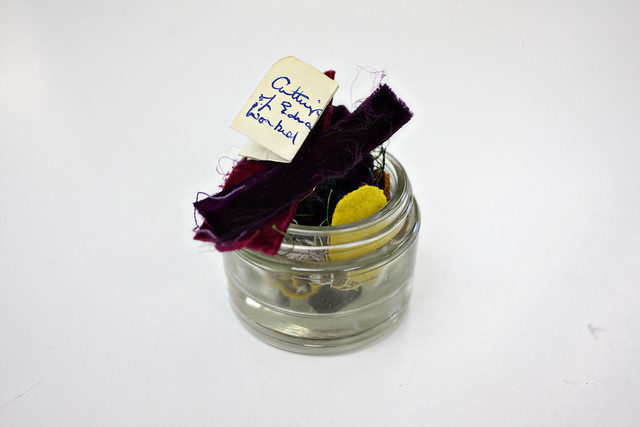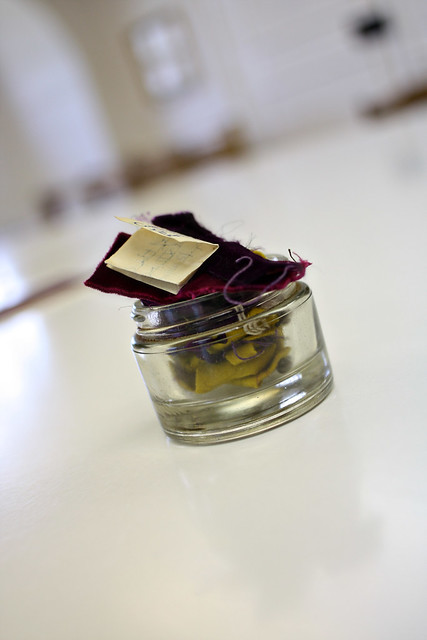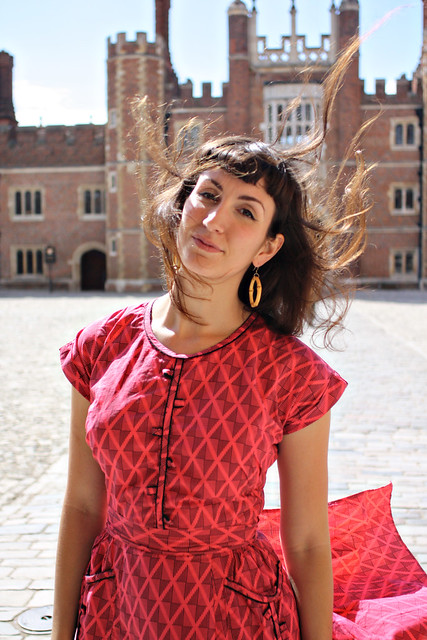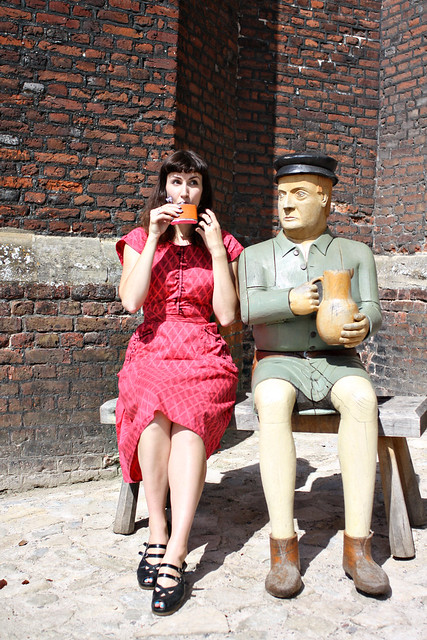Welcome to the Historic Royal Palace of Hampton Court!
It's home to an Edward-themed organisation, and an amazing one at that. The Royal School of Needlework was founded in 1872 as the plain old School of Art Needlework. Princess Helena, the third daughter of Queen Victoria, became the first president in late that same year (or possibly early 1873); and Queen Victoria its first Patron in 1875. So it was then that the School earned the title 'Royal'. It has a long and very interesting history (I find the bit about men coming in to work during WWI particularly fascinating - the ladies must have been thunderstruck!), but very strong ties to the main man himself (of course), King Edward VII. He became a Patron with his wife Princess Alexandra in 1877... the latter continued in her role long after Edward's early death in 1910.
One of perhaps the most significant commissions the RSN undertook was that of Queen Victoria's funeral pall. Commercial company after commercial company refused to do it, declaring that there was not enough time, until only 48 hours before the funeral remained. But the ladies of the RSN came through - that 48 hours saw 21 hours of solid teamwork by many people on the piece. The main thing the School prides itself upon to this day, is the fact that countless hands could work on one piece, but no one would ever be able to tell that it wasn't done by the same person.
This amazing feat proved their skill and willing beyond any doubt, and led to the School being commissioned to work on the subject of this blog. In a timely fashion, given the recent events here in the UK, I'm talking today about King Edward VII's coronation... more specifically, his robes.
Pretty snazzy, eh?
The robes themselves were made, of course, by Ede and Ravenscroft, robe makers to the stars (well, royalty and anyone who wants a proper robe). But it's the braiding that edges the velvet and ermine that was crafted so finely by the Royal School of Needlework.
I was very honoured to be shown some mounted samples of the actual braiding, which were breathtakingly detailed. I wasn't allowed to photograph it, unfortunately. The School is a charity, and they fiercely protect their assets. So it's fair enough.
Sometimes crimson and sometimes purple... not sure what colour it actually was!
But what I was allowed to photograph, was, to my mind, even more interesting and wonderful. Dr Susan Kay-Williams, who was kind enough to give me her time and wisdom, told me a story about being invited to view some pieces by the relatives of one Miss Rosina Smith. Miss Smith had worked for the RSN for many years, and had been part of the team who'd pulled out all the stops on King Edward's coronation robes. and she had squirrelled away some little snippets of cloth, braid and thread into a little pot, complete with a slip of handwriting stating what the contents were and the date: 1902. Look!
Crimson and royal purple velvet (so both were used!), gold thread and golden yellow felt to pad the gold work...
What a fabulous find! This little pot has never even been on display, so this is a world exclusive private view. Don't say I don't spoil you!
Queen Alexandra's robes were equally beautiful, of course: equally velvety, equally ermine-trimmed... not quite as grand though! Poor Alexandra had to wait thirty-four years to become Queen, and they collectively only reigned eight years, until poor Bertie's untimely death.
What a lot of work to go into two robes, only to need new ones for George and Mary, who were themselves crowned in May 1910, you might be thinking. Well, clearly Ede and Ravenscroft felt the same, since according to them, they did in fact reuse the robes. They certainly look very similar!
Anyway, it was a fascinating trip around the School. Dr Kay-Williams showed me some recent finds that they'd made, on eBay of all places - one of which a cover of Black and White Magazine from April 19th 1902, showing the busy workshop and the ladies in their uniforms. The current ladies apparently remarked that apart from the outfits, nothing whatsoever had changed in the last 110 years. And that's pretty amazing in this modern age!
Despite the lack of permission for photos inside, it was a very interesting trip indeed, and I hope I've conveyed some of that here! And actually, while the Royal School of Needlework isn't open to the public very often, Edward and Alexandra would have been to Hampton Court itself on many an occasion - it was still in use as a Royal Palace during Victoria's reign, but she was the first monarch to allow visitors. The School itself only relocated there in 1987, its sixth home since its beginnings in Kensington.
But what may interest you, dear readers, is the Grand Sale, which will take place this November! On Friday 9 and Saturday 10 November - 10am to 4pm - there will be a big vintage sale. The School was left a huge legacy of vintage garments, which they began to sell off in 2010, but there are lots more, and I have offered to donate a few of my own dresses to the cause, to raise funds. So make sure you keep an eye on the events bit of the RSN website and go along if you can.
Anyway! Here are some more pictures that I could actually take! The first picture up there at the top might make it look like it was a lovely day. It was indeed beautifully sunny, but it was actually quite windy...
... very windy indeed.
I may have been flashing my behind someone behind in this picture...
I found a chap on a bench who looked like a tippler. I offered him some KGL, but he was impassive.
Oh well, more for me! ;)
I hope you've enjoyed this month's Edward history story. Do visit the King's Ginger site, or better a fan on Facebook if you'd like to know more and hear the latest. Such as the news that it's now available in Canada! Hurrah!
Until next time, stay zingy!
DiaryofaVintageGirl.com














0 comments:
Post a Comment